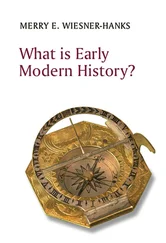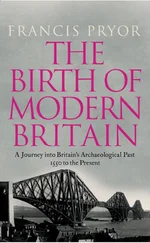Nor did he plead in vain. The age was ready for some new kind of intellectual activity; the subtleties of the Schoolmen’s dialectic were beginning to pall, and the professional studies of the Universities were unsatisfying. Petrarch, by his great gifts and unique position, succeeded in making countless friends and patrons for humanism among those persons whose favour was indispensable to its earlier progress. For it should be remembered that humanism was not cradled in the bosom of Universities,—which, indeed, for a long while, were mostly hostile to it; nor, again, was it brought in by a sweeping movement of the popular mind. Humanism depended, in its infancy and youth, on encouragement by powerful and wealthy individuals, through whom the humanist gained a footing and an audience in this or that Italian city. Petrarch won the ear of men who became patrons of humanism. But he did more than that. He stimulated an inner circle of disciples, foremost among whom was his devoted friend and admirer, Boccaccio. When, therefore, Petrarch is designated as the “father” or “founder” of humanism, the description is correct, if rightly understood. He was, in his own person, the first brilliant humanist; he was also the first effective propagator of humanism in the world at large; and he inspired chosen pupils who continued the tradition.
In his letter To Homer, Petrarch says, “I have not been so fortunate as to learn Greek.” But he had at least made some attempt to do so. Barlaam, a Calabrian by birth, who had long resided at Constantinople, came to Italy in 1339 on a mission from the Emperor Cantacuzenus. It was probably in 1342 that Petrarch began to study Greek with him. “I had thrown myself into the work,” he says, “with eager hope and keen desire. But the strangeness of the foreign tongue, and the early departure of my teacher, baffled my purpose.” The failure, thus shortly told, throws an instructive light on the difficulties which beset a revival of Greek. No aids to the acquisition of Greek then existed in the Latin or the Italian language. The rudiments of grammar and vocabulary could be acquired only from a Greek-speaking teacher. If the learner’s aim had been merely to gain some knowledge of the Romaic spoken and written in the daily life of the Levant, tutors in plenty could have been found at Venice, or at any Italian centre of commerce. But a scholarly knowledge of ancient Greek was a rare attainment; rarer still was a scholarly acquaintance with the Greek classics. Even at Constantinople such knowledge was then possessed only by a few persons of superior education, including those who were professional students or men of letters. A Greek teacher of this class could be drawn to Italy, as a rule, only by some definite prospect of honour and emolument. The Italian revival of Greek in the fourteenth and fifteenth centuries was effected mainly by a small number of highly-accomplished Greeks, who were induced to settle as professors at Florence or other centres. The revival was also furthered by the visits which several Italian scholars made to Constantinople for the purpose of studying the language there. In viewing the Italian revival of Greek as a whole, we must remember its essential dependence on these sources. The higher Byzantine level of Greek scholarship in that age was the highest to which Italy could then aspire. Italian students of Greek in the earlier and middle periods of the Renaissance learned the classical language from men to whom its modern form was a vernacular. This was, in one way, a distinct advantage, since there is a large continuity both of idiom and of vocabulary between classical Greek and the more polished modern Greek. On the other hand, the Byzantine feeling for the genius and style of the classical literature had become grievously defective.
Boccaccio is the first Italian of the Renaissance who is known to have made any progress in the study of Greek. He was impelled to it by the advice of Petrarch, a friend to whom his modest and affectionate nature gave an ungrudging and unbounded worship. His teacher was Leontius Pilatus, a pupil of the Barlaam who had been Petrarch’s instructor, and, like him, a Calabrian who had migrated to Byzantium. The notion of Leontius to be gathered from Petrarch (who had read with him at Venice), and from Boccaccio, again illustrates the difficulty of finding tolerable Greek teaching in Italy. Leontius evidently knew little or nothing beyond the Byzantine Greek of the day; he was stupid and pretentious; his temper appears to have been morose, and his personal habits were repulsive. Nevertheless Boccaccio received him into his house at Florence, and caused him to be appointed professor of Greek in the Studio there. He made for Boccaccio a bald and faulty translation of Homer into bad Latin prose, which was sent to Petrarch, and received by him as an inestimable boon.
But the first real teacher of Greek in Italy, the man with whom the revival of Greek learning in the West began, was Manuel Chrysoloras, who lectured on Greek at Florence from 1397 to 1400. He was a Byzantine of good family, who had previously visited Italy on a mission from the Emperor Paleologus, for the purpose of seeking aid against the Turks. Some cultivated Florentines, who had then met him, afterwards prevailed on the Signoria of Florence to offer him the chair of Greek, which he accepted. His coming made an epoch in the history of European letters. He was a scholar, able to interpret the classical Greek poets and prose-writers; and he was eloquent. The enthusiasm created at Florence must have been remarkable. For the first time, Italians were placed in sympathy with the ancient Greek mind at its best. Ardent students, young and old, including several who afterwards became eminent, crowded the lecture-room. One of these was Lionardo Bruni, well-known in later life for his Latin History of Florence, as also for translations from Plato, Aristotle, Demosthenes, and Plutarch. He has described the powerful spell by which the new teacher drew him away from the study of Civil Law. It is especially noteworthy that he speaks of Chrysoloras, without hesitation, as opening a new era. “The knowledge of Greek,” he says, “was revived, after an interval of seven centuries.” (He might have said, eight or nine.) “Chrysoloras of Byzantium... brought us Greek learning...! gave myself to his teaching with such ardour, that my dreams at night were filled with what I had learned from him by day.” Another scholar, who met Chrysoloras at Pavia, Pier Candido Decembrio, speaks of him with a similar enthusiasm. The Greek Grammar of Chrysoloras, in the form of questions and answers (Erotemata), was the earliest modern book of the kind. Florence was then the intellectual centre of Italy; and throughout the fifteenth century it continued to be pre-eminently the home of Greek studies, while at the same time taking its full share in the advancement of Latin scholarship. But Chrysoloras did not confine his activities to Florence. He taught Greek at Pavia (for some time between 1400 and 1403); as well as at Milan, at Venice, and perhaps at Rome. He visited Padua also, but did not teach there.
The movement so powerfully and widely initiated by Chrysoloras was continued by several of his compatriots, most of whom came to Italy between 1400 and the capture of Constantinople in 1453. The restoration of Greek letters in Italy preceded the fall of the Eastern Empire, and was not, as has sometimes been supposed, a result of emigrations caused by that event. The Greeks who chiefly effected the revival were drawn westward by the demand for teachers which offered them distinguished and lucrative careers. The subsequent break-up of Byzantine society sent over, no doubt, a fresh stream of exiles, and reinforced the ranks of Hellenism in the West; but by that time Greek studies in Italy were already vigorous.
Читать дальше












